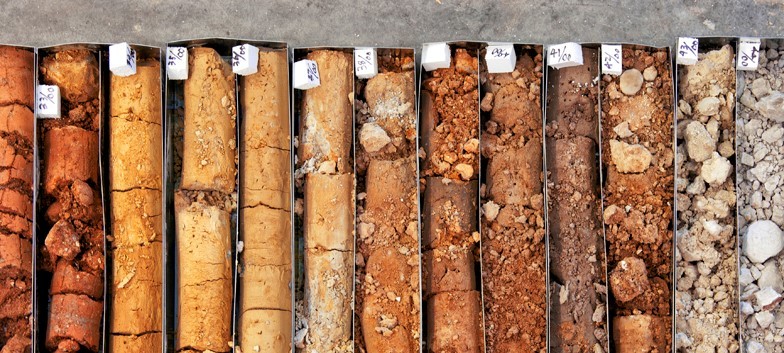Professional Civil Geotechnical Engineering Solutions for Complex Projects
Professional Civil Geotechnical Engineering Solutions for Complex Projects
Blog Article
Exploring the Vital Role of Consulting Engineers in Geotechnical Projects: A Detailed Introduction of Their Payments and Duties
Consulting designers work as pivotal numbers within geotechnical projects, charged with the complex duties of evaluating subsurface conditions and guaranteeing the structural stability of constructions. Their know-how not only forms design parameters and regulatory compliance but also facilitates vital interaction among various stakeholders, therefore enhancing project end results. The complexity of their duty is more underscored by the requirement for aggressive danger monitoring approaches and ecological factors to consider. As we discover the multifaceted contributions of getting in touch with engineers, it ends up being apparent that their participation is necessary to navigating the challenges fundamental in geotechnical endeavors. What details techniques do these professionals utilize to protect project success?
Overview of Geotechnical Engineering
Geotechnical engineering is a crucial technique within civil engineering that concentrates on the habits of earth materials and their interaction with structures. This area incorporates the research of soil, rock, groundwater, and the auto mechanics governing their properties and actions. Geotechnical designers evaluate the physical and chemical properties of these products to establish their viability for numerous building and construction tasks, ensuring that structures are established on secure and dependable ground.

Furthermore, geotechnical designers have to consider ecological elements, such as dirt contamination and groundwater management, to advertise lasting growth. Their competence is vital in optimizing the design and building processes, eventually adding to the durability and safety of civil engineering tasks.
Key Obligations of Consulting Engineers

In addition, they are in charge of creating style specifications and requirements that stick to regulative requirements and ideal methods. This consists of reviewing site conditions and establishing appropriate building and construction approaches, which is important for lessening risks associated with ground instability.
Consulting designers also function as liaisons in between numerous stakeholders, including customers, specialists, and regulative bodies, promoting clear communication and collaboration throughout the task lifecycle. consulting civil engineering companies. They give professional support throughout building and construction, making certain that geotechnical facets are sufficiently resolved and that any type of unpredicted challenges are handled effectively. read the article Inevitably, the multifaceted obligations of consulting designers are fundamental to the honesty and success of geotechnical jobs, influencing both safety and sustainability in building methods
Site Analyses and Investigations
A thorough website analysis is vital for understanding the subsurface conditions that affect geotechnical projects. Consulting engineers play a crucial duty in performing these assessments to guarantee the safety and stability of building and construction activities. This procedure typically involves a collection of examinations, consisting of soil sampling, borehole exploration, and geophysical studies, to collect vital data on dirt homes, groundwater levels, and the geological context of the website.
Engineers evaluate the acquired data to identify the possible challenges posed by the subsurface problems, such as dirt instability or high groundwater degrees, which can influence the design and implementation of the project. Furthermore, site evaluations help in examining the presence of impurities, which is critical for environmental compliance and ensuring public security.
In addition, seeking advice from engineers coordinate with multidisciplinary groups to integrate searchings for from site examinations right into wider project purposes. Via strenuous documents and reporting, they give important understandings that inform stakeholders regarding the viability of the website for proposed developments. Eventually, the thoroughness of website assessments lays the structure for effective preparation and websites design options, mitigating threats related to unpredicted subsurface conditions.
Design and Threat Management
After performing complete site analyses, seeking advice from designers focus on the design and risk management facets of geotechnical projects. This phase is vital as it ensures that the crafted solutions are not just effective however likewise safe and sustainable (consulting civil engineering companies). Engineers use their know-how to establish styles that attend to the certain geotechnical conditions determined throughout the site evaluations, including soil homes, groundwater behavior, and potential hazards
Threat management is essential to this process, as it includes recognizing, examining, and mitigating potential risks related to the task. Engineers employ various analytical techniques and modeling methods to anticipate the behavior of soil and rock under different loading conditions. By assessing uncertainties and possible failing settings, they can suggest style adjustments that improve security and decrease threat.
Additionally, consulting designers make sure conformity with relevant codes and requirements, which are necessary for lessening responsibilities. They likewise prepare backup strategies to resolve unexpected difficulties that may emerge throughout construction. With meticulous layout and aggressive risk administration, getting in touch with designers play an important duty in making certain the safety, capability, and long life of geotechnical tasks, inevitably adding to the general success of the building venture.
Cooperation With Task Stakeholders
Effective partnership with job stakeholders is necessary for the success of geotechnical projects. Consulting engineers play a pivotal function in helping with communication among various parties, websites including customers, service providers, governing authorities, and environmental professionals. This partnership makes sure that all stakeholders have a clear understanding of task objectives, timelines, and prospective threats.
Consulting designers are liable for integrating stakeholder input right into the design and execution of geotechnical remedies - consulting civil engineering companies. By actively engaging with stakeholders, they can recognize worries early in the project lifecycle, allowing prompt changes and mitigating potential disputes. This proactive approach not only cultivates count on however additionally enhances task efficiency
Furthermore, speaking with engineers should browse the intricacies of governing compliance, making certain that all geotechnical methods line up with legal and environmental criteria. Their experience around is vital in maintaining open lines of communication with regulatory bodies, thus assisting in smoother approvals and permitting processes.
Conclusion

Report this page